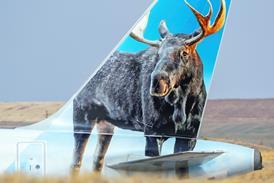Ground tests of experimental air-breathing rockets at Aerojet and Rocketdyne have demonstrated improved low-speed performance, says NASA. The rocket-based combined cycle (RBCC) engines are being developed to power a future "third generation" reusable launch vehicle.

The RBCC functions as a ducted rocket at low speeds, making the transistion to an air-breathing ramjet and supersonic-combustion ramjet at progressively higher speeds, before converting to a conventional rocket to boost the vehicle out of the Earth's atmosphere. The use of air-breathing propulsion for about half of the flight cuts the amount of oxygen the vehicle must carry, reducing launch weight and cost.
The latest tests evaluated modifications to the experimental engines to improve their performance in air-augmented rocket mode, to increase thrust at low speed. Aerojet says ground tests of its Strutjet air-breathing rocket achieved their goal, showing a rise in thrust augmentation.
Under its Advanced Space Transportation programme, NASA is funding work which could result in flight testing of an RBCC-powered technology demonstrator. The agency is also conducting related experiments, including subscale tests of a magnetic-levitation track that could be used to accelerate the launch vehicle inexpensively and cut the amount of rocket boost needed.
In another test, set for late June, NASA will launch a modified ballistic-missile re-entry vehicle to evaluate an ultra-high-temperature ceramic material that could allow reusable launch vehicles to be designed with aerodynamically efficient sharp leading edges.
Source: Flight International




















